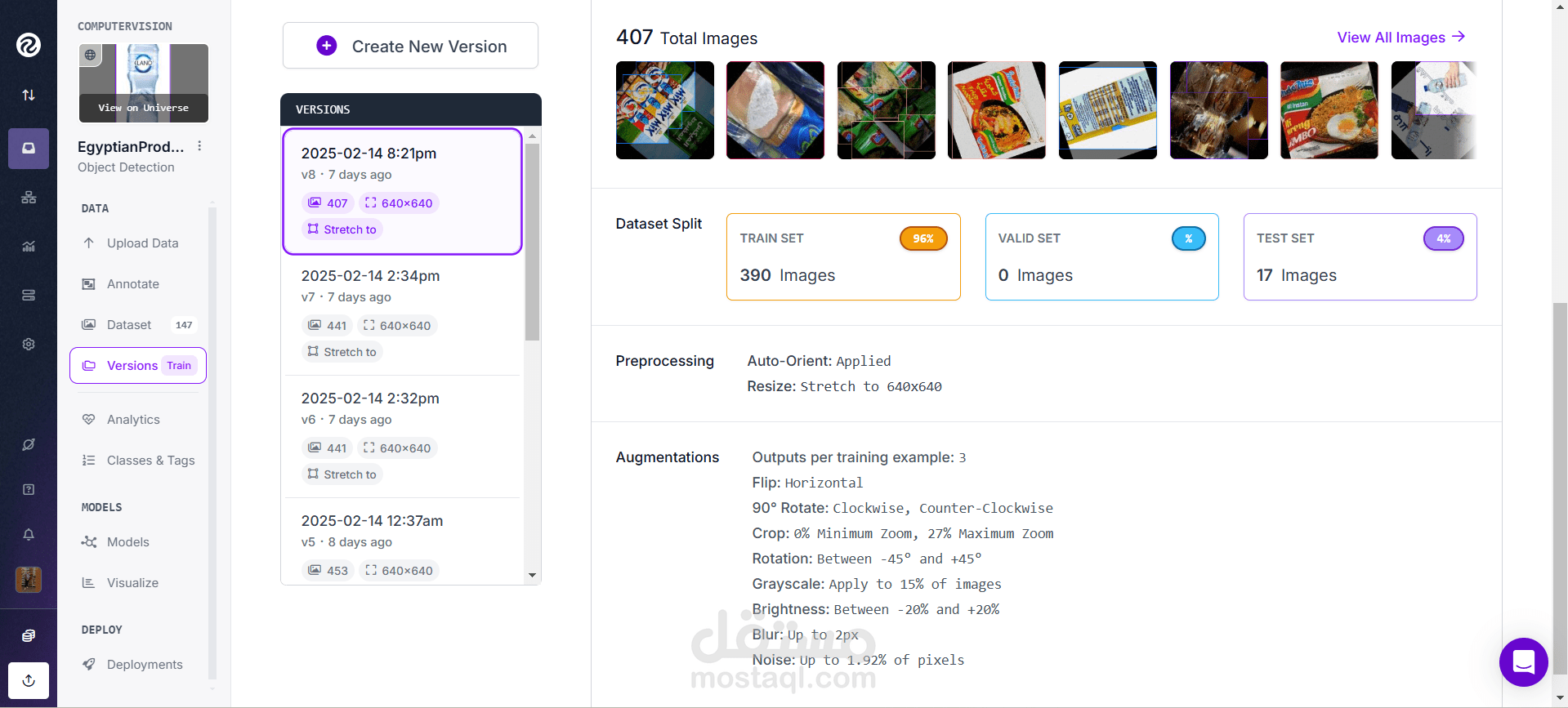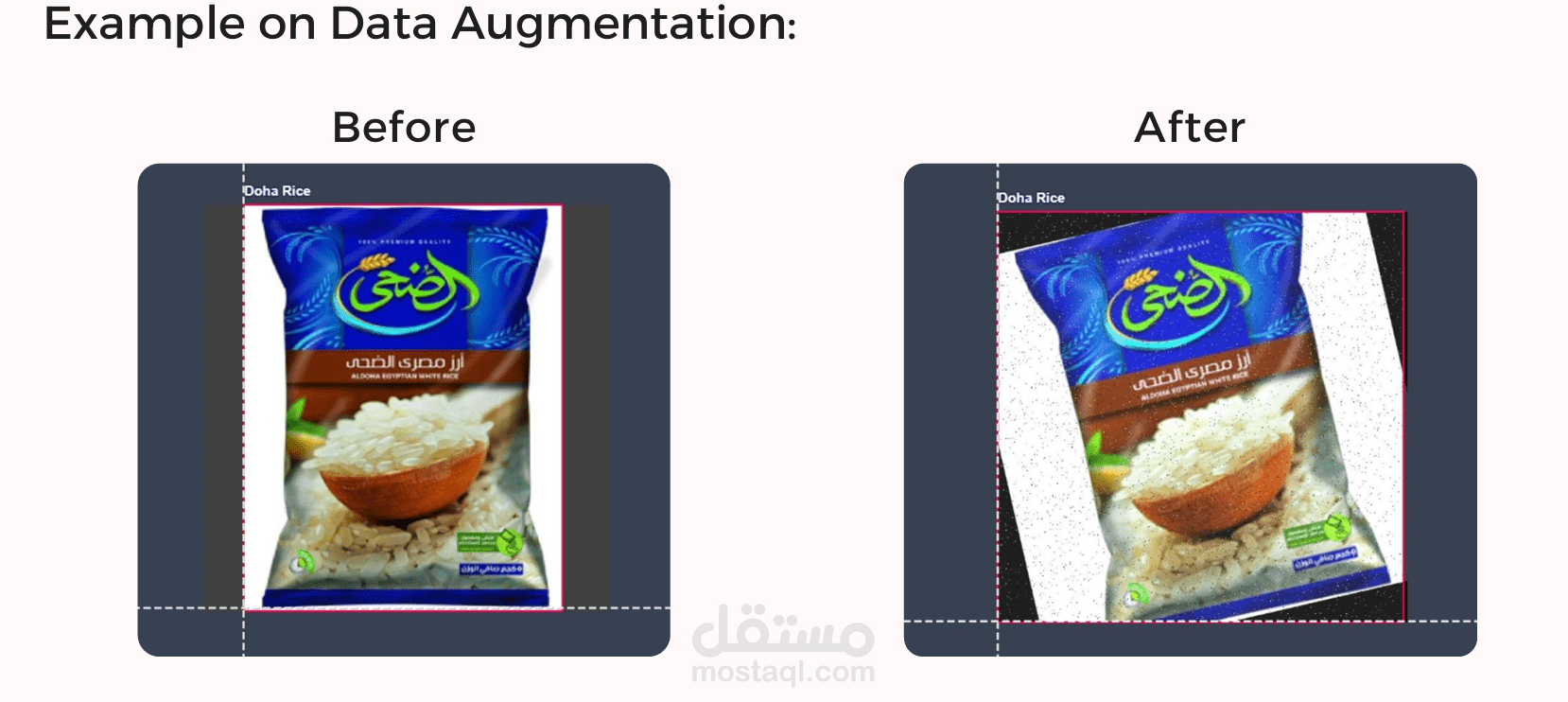Egyptian Product Recognition Dataset for AI-Powered Smart Cart
تفاصيل العمل
As part of our smart shopping cart project, I developed a specialized dataset for training an AI-powered camera to recognize Egyptian products efficiently. The dataset was carefully curated and processed to enhance model accuracy and performance.
Dataset Creation Process:
Image Collection:
Gathered product images from multiple sources, including Google Images and in-store inspections at Carrefour and other retail stores.
Ensured diversity in product angles, lighting conditions, and packaging variations for better model generalization.
Dataset Preparation with Roboflow:
Uploaded the collected images to Roboflow, a powerful dataset management and augmentation platform.
Dataset Splitting: Distributed images into training, validation, and testing sets to ensure a balanced model evaluation.
Data Augmentation: Leveraged Roboflow’s built-in augmentation techniques (e.g., rotation, brightness adjustments, flipping) to artificially expand the dataset and improve model robustness.
Output:
A well-structured dataset ready for training an AI-based object detection model to accurately recognize and classify Egyptian products in real-time.
Enhanced dataset quality through automated augmentation, ensuring better performance in various real-world conditions.
This dataset serves as the foundation for training the AI camera in our smart shopping cart, enabling fast, accurate product recognition to streamline the shopping experience.

